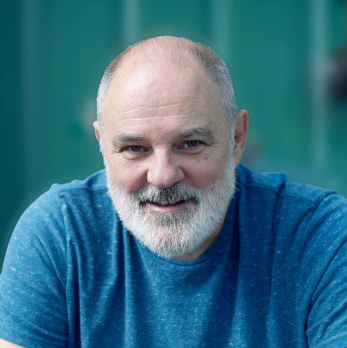Hi, Chip,
We have an inquiry from a coworker who uses “says” in stories. It drives me up the wall, cuz I was taught that it’s “said” all the time, unless it’s a very specific situation, like a totally fluffy feature story. So I’m wondering what the rule is.
All the best.
Sebastian Moraga
Cashmere Valley (Wash.) Record
Sebastian,
Ah, the says vs. said debate continues, pitting present vs. past tense verbs of attribution, also known as dialogue tags.
My take: feature writers, myself included, often choose “says” over “said.”
The first, we believe, gets us closer to the goal set by the late John Gardner, novelist and writing teacher: to convey dramatic action, as in a scene, that creates a “vivid continuous dream” and keeps a reader reading, especially when the story represents a narrative reconstruction of events.
When I wrote a “day in the life” story about a blind child, present tense underscored the story’s conceit, that readers were watching the action unfold before their eyes. (As you’ll see, I didn’t remain faithful to present tense. More on that later.)
Some editors and other critics abhor its familiarity, considering it the kind of overindulgence that feature writers revel in.
They argue for the second choice, stressing that stories, wherever they appear in a newspaper, occur by temporal default in the past, and thus call for the verb tense that conveys summary narrative. The first shows, the second tells. Perhaps that’s why “said” won the battle when I wrote this news feature for The Providence Journal. (Excerpts of these two articles are available here.)
Bottom line: It depends — on your intent, your paper’s style, your editor’s preference and how those verbs of attribution sound on the page.
The debate over says vs. said is less contentious in broadcast writing. “Use present tense, but don’t belabor it,” writes Laurie Lattimore on JPROF, University of Tennessee professor Jim Stovall‘s Web site on teaching journalism. “Not every story must sound as if it just happened moments before the newscast.”
Anticipating a “That’s a big help,” I decided to find out where editors and writers I admire come down on the says vs. said debate.
I started with Mary Lynn Plageman, managing editor for features at The Columbus Dispatch. (I recently led online writing workshops at the paper.)
DON’T WEAR IT OUT
Maybe more important: It strikes me as a pitfall of sorts for some writers, because they inevitably fail to sustain it. (In such cases, “said” creeps into the storytelling/scene-setting somewhere in the middle of the piece.) (Note from Chip: You’ll notice that happened in the Jed Barton story.) Used well — and I’ve seen strong writers use it well — I like what it does for immediacy in a well-done feature/newsfeature.
“Said” will always work and is perfectly functional, but I would never say never to “says.” Tense — like punctuation, word choice, paragraphing and any number of other things — is a writing tool that writers should be allowed to pull from the toolbox. …
Next I turned to Chris Wienandt, business news copy chief at the Dallas Morning News and president of the American Society of Copy Editors.
CONSISTENCY COUNTS
As far as news writing is concerned, I’m a little less flexible. “Said” works best for quotations, both direct and indirect. “Says,” in my book, should be reserved for a sentiment that the subject expresses as a generality (this is by definition a little hard to pin down): “Ms. Smith says training your dog is a hefty responsibility.” But that’s not a situation you run into all that often.
Which brings me to forms of attribution other than “say.” Practically any other word used for that purpose — continue, note, explain, insist — drains attention away from the quote. I’m particularly bothered by “add,” not least because that’s usually not what the person it’s applied to is doing. …
Third on my list was Jan Winburn, special projects editor at the Atlanta Journal-Constitution, who has edited Pulitzer- and ASNE Award-winning narratives.
KEEPING READERS IN THE MOMENT
I heard a writer recently say that she was taught that “says” made a story sound less newsy. Softer and perhaps not as important.
It seems like a chicken-and-egg debate to me. Doesn’t “said” just sound more newsworthy because we’ve long preferred its use in news stories? Would our news stories sound more immediate if we sometimes used says?
Last, but certainly not least, I turned to one of my favorite writers, Ken Fuson of the Des Moines Register. He relied on present tense in his ASNE Award-winning series, “A Stage in Their Lives,” a six-part serial narrative for The Sun in Baltimore, edited by Jan Winburn, that chronicled a high school production of “West Side Story.”
A QUESTION OF IMMEDIACY
To me, the issue is immediacy. “Says” sounds like it’s being spoken right now, in real time. “Said” sounds like it was said in the past. Like it’s already happened.
If you’re doing a narrative, or even a daily feature in which you want the reader to have a sense of being there, as the action is taking place, I think you want to use “says.” For example:
She kicks the ball.
Goal.
“Great job,” her coach says.
That sounds like you’re watching the scene. Compare that to:
She kicks the ball.
Goal.
“Great job,” her coach said.
That breaks the spell, it seems to me. You’re no longer watching something as it happens. You’re watching something that has already happened. That makes it harder, in my view, to get “swept away” in the story.
Thanks for asking, Sebastian. Thanks for answering, Mary Lynn, Chris, Jan and Ken.
So what’s your take on the says vs. said debate?
Chip






